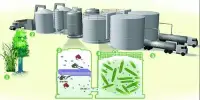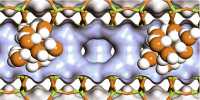In a new study published in Nature, Caltech researchers have discovered bacteria that can metabolize manganese – one of the most abundant elements on Earth’s surface – as their main source of energy. Consisting of a combination of two species, bacteria can use the metal and create energy to sustain and grow in the most minimal environment. It is the first bacterium to be used in chemosynthesis, despite scientists predicting it for more than a century.
Bacteria have a slightly unusual taste in their favorite foods. From bowing our heads to the flight to the left and sitting next to deep ocean thermal vents, we constantly discover the different ways they choose to gain power.
Interestingly, Jared Leadbetter, a professor of environmental microbiology at the California Institute for Technology Caltech, says he made the discovery by accident. After being out of the office for several months and leaving a jar filled with manganese and tap water from previous experiments, this professor came back to find the jar bound with a black substance. He believed it could be the result of stagnant bacteria that could metabolize manganese, and his team immediately began testing the contents of the jar. They discovered that two new bacterial species living in tap water were using left-over manganese as food, later creating a black byproduct that was later identified as manganese oxide.
“One of the great things about nature’s germs is that they can metabolize seemingly unexpected materials like metals that give the cells the energy they need.” Professor Leadbetter said in a statement, “These are the first bacteria to be seen using manganese as their fuel source.”
Manganese oxide is a problem for water distribution systems, as it accumulates and blocks waterways. Understanding how oxide deposits will increase will help prevent it, but their source scientists have so far ruled it out.
Leadbetter said,“Drinking-water-distribution systems contain a whole set of environmental engineering literature on manganese oxide exposure.” “However, there remains a mystery as to how and for what reasons such substances are produced there. Clearly, many scientists have considered that bacteria using manganese may be responsible for the energy, but no evidence has yet been found to support this idea.”
The original bacterial species use it in a process called bioremediation to reduce and remove contaminants and therefore may have a direct link to how bioremediation succeeds in supplying water with the easy availability of oxides. Despite its pipe-stuck defects, researchers have found manganese oxide to play an important role in reducing groundwater contamination.
Through the discovery of manganese-metabolic bacteria, the individual bacteria in the lead laboratory are responsible for this. If researchers understand the source of the nodules, they may be able to protect the local ecosystem from over-mining. Postdoctoral scholar Hang Yu, who collaborated with the Leadbetter on the study, said: “This indicates the need to better understand marine manganese nodules before they are decimated by mining.” In addition to understanding the ecosystem of sub-surface water systems, this discovery could go even deeper. Over the centuries, large metal nodules have been found along the coast, and scientists have been amazed. Originally composed of manganese but with rare metals, these balls are also of interest to biologists and mining companies.















